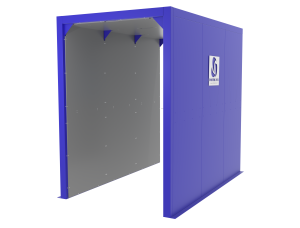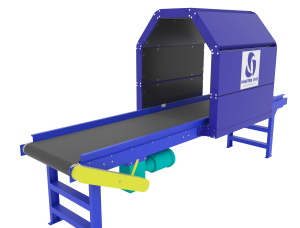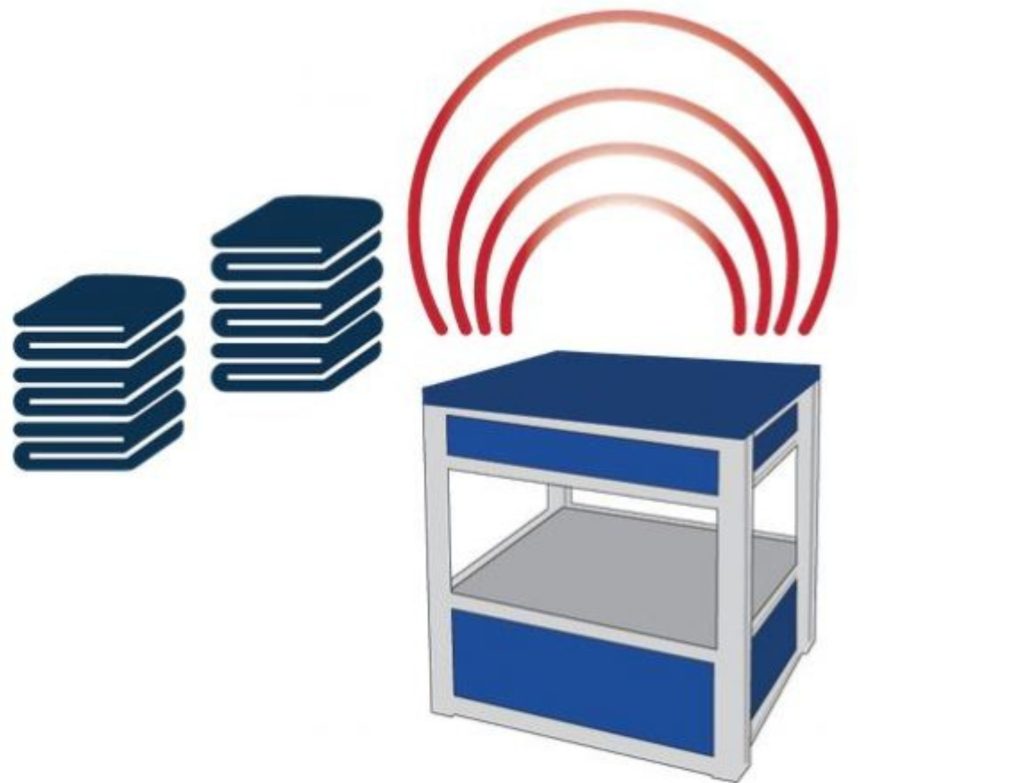Properly installing RFID tags in uniforms is essential to ensure their long-term functionality. Considering the conditions uniforms experience during use and the harsh cleaning procedures they must regularly endure, installation of the RFID tags must be professional-grade.
This article will discuss how to choose the right RFID tag for your work apparel, and how to best install them for long-term operation.
3 Steps to Install RFID Tags In Uniforms
Depending on the tag and uniform type, methods can slightly differ. This 3-step guide to RFID tag installation in uniforms will discuss the most modern methods for next-generation tags.
- 1. Use the Right RFID Tag
- 2. Decide Placement
- 3. Install the Tag
Step 1 - Use the Right RFID Tag
Without the right tag, it doesn’t matter how well-installed it is. An RFID tag that isn’t waterproof, flexible, correctly engineered, or to built withstand pressure, heat, and agitation, will not last. As a result, securing the right RFID tags from a trusted and experienced manufacturer is essential.
To locate a trusted vendor, go directly to the manufacturer/supplier. Positek RFID, for example, has a verifiable reputation for excellent products and will work with you to build and install your ideal RFID management system.
The Fujitsu WT-A533G Garment Tag is engineered to be unnoticeable by the wearer and to maintain operation over the life of the garment. Watch this video for more information, and to see it installed!
Step 2 - Decide Placement
The placement of your RFID tags will be partially decided by the reading system in use, the facility layout, and the garment itself.
Reading System
The reading systems are key to getting the most out of the RFID management system. Systems that utilize portals, tunnels, or bundle readers provide the most reliable reading solutions. Mounting the RFID tag in the collar or wastebands are recommended. This allows the maxim reading capability for the garment to be read with equal thoroughness in all three reading systems.
Facilities that utilize handhelds require multiple reading passes and angles to provide maximum read accuracy. Because they demand more employee physical activity, facilities should prioritize employee ergonomics and reachability on the line.
Facilities that use remote antennas at strategic locations should prioritize consistent reading quality and minimize reading adjacent tags. Any chance of a garment’s tag passing through a weak signal point and not being read, or reading tags in adjacent carts or racks introduces unwelcome variables to the production line.
Attributes of the uniform itself are also important considerations:
The Garment
Uniform Shirts or Coveralls – Placement of the tag on a shirt should be in an area that receives as little friction or potential damage as possible. As such, placement near the collar is ideal as this area is prone to less wear and tear as the rest of the garment.
If the reader a uniform shirt interfaces with benefit from a lower tag placement, then place it vertically, along a seam if available, and a couple of inches from the shirt’s bottom. Take into consideration wearer comfort and the potential friction the area will experience.


Pants – When placing an RFID tag on pants, install it either in the back along the belt line or vertically along the side seam. This is the least likely area to experience wear and tear.
If lower tag placement is necessary, install the tag horizontally near the bottom of the inseam. Consider wearer comfort and possible friction when making this decision.
Placement of the tags can also affect tag readability. Care should be taken when setting up remote readers and antennas for such reading. You should consult an industry expert like Positek RFID when using remote readers and antennas.
Step 3 - Install the Tag
Installation of next-generation RFID is simple and straightforward; it only requires the right equipment and streamlined processes. Heat-sealing is the optimum method for attaching RFID tags to garments. This allows both the RFID tag and wearer information to be printed on the heat-seal label before attachment.
Using an appropriate heat-sealer designed to adhere RFID chips to clothing is essential, as is identifying and utilizing the optimal heat setting for the installation process.
Here’s an example of the heat-sealing process:
The Fujitsu WT-A533G garment tag comes with an adhesive backing, making them an ideal complement to existing heat seal labels.
Rules for Installation
Though the process of garment RFID tag installation is relatively simple, there are two absolute rules:
- Tags must never be folded
- Tags must not be damaged during installation
Any kind of installation that compromises the structure or functionality of the tag runs the risk of disabling the tag. When that happens, the reader cannot interface with the tag and the functionality of the whole system is compromised.
How to Source, Place, and Install RFID Tags Reliably
The best way to build and maintain an RFID management system that will reliably and accurately operate long into the future is to work with a professional.
Positek RFID specializes in creating RFID management systems for laundry facilities. We take the unique qualities, operations, and products you offer and devise a system that optimizes production and delivery from every angle. Click here to hear from our customers about how we’ve helped them.
Contact Positek RFID for Competent, Experienced, and Ready RFID Tag Installation
Positek RFID is a leader in industrial laundry RFID management. We utilize the latest technology in the field and build it to best fit the needs of laundry facilities. Our experts are ready to help you customize the most beneficial system to your specific needs.
Call us at (610) 275-2905 or leave your contact information here, and a representative will be in touch shortly.





